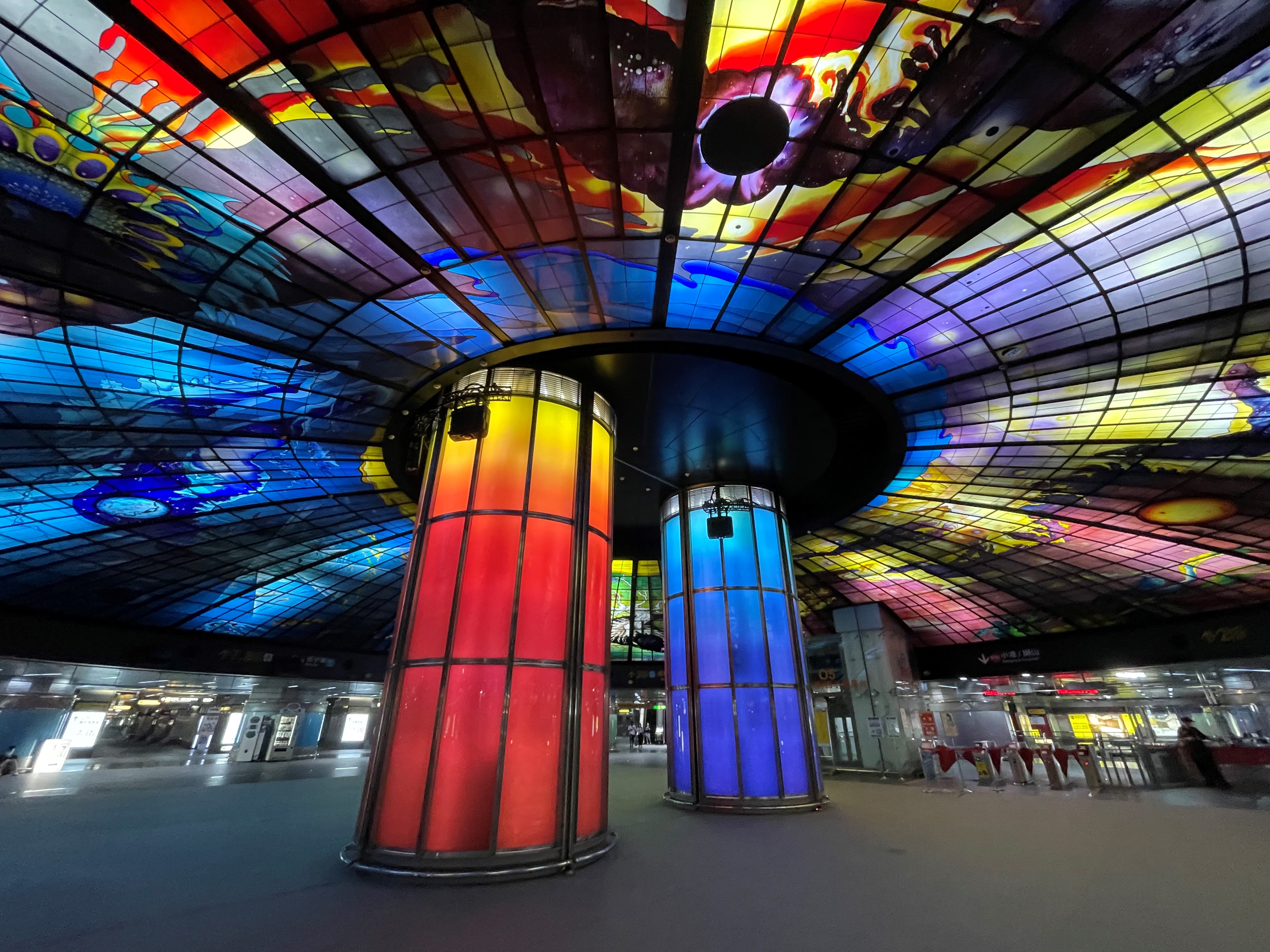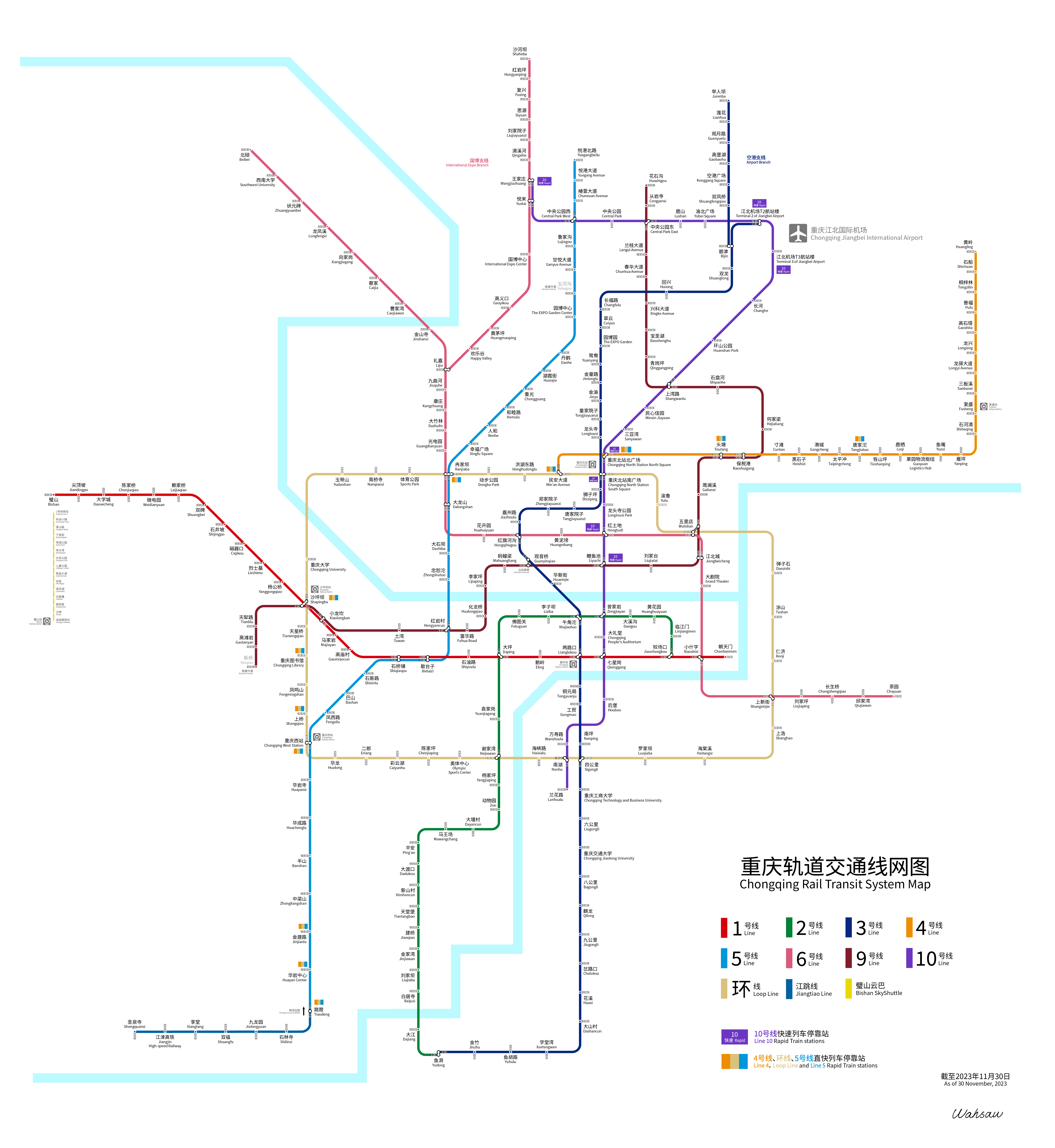|
Chaotianmen Station
Chaotianmen is a station on Line 1 of Chongqing Rail Transit in Chongqing Municipality, China. It is located in Yuzhong District and opened on 31 December 2020. Station structure There are an island platform and two side platforms at this station, which adopts the Spanish solution In railway and rapid transit parlance, the Spanish solution is a station layout with two railway platforms, one on each side of the track, which allows for separate platforms for boarding and alighting. Description This platform arrangement allo ... to separate boarding and alighting passengers. References Chongqing Rail Transit stations Railway stations in China opened in 2020 {{Chongqing-railstation-stub ... [...More Info...] [...Related Items...] OR: [Wikipedia] [Google] [Baidu] |
Chongqing
Chongqing ( or ; ; Sichuanese pronunciation: , Standard Mandarin pronunciation: ), alternately romanized as Chungking (), is a municipality in Southwest China. The official abbreviation of the city, "" (), was approved by the State Council on 18 April 1997. This abbreviation is derived from the old name of a part of the Jialing River that runs through Chongqing and feeds into the Yangtze River. Administratively, it is one of the four municipalities under the direct administration of the central government of the People's Republic of China (the other three are Beijing, Shanghai, and Tianjin), and the only such municipality located deep inland. The municipality of Chongqing, roughly the size of Austria, includes the city of Chongqing as well as various discontiguous cities. Due to a classification technicality, Chongqing municipality can claim to be the largest city proper in the worldthough it does not have the world's largest urban area. Chongqing is the only city ... [...More Info...] [...Related Items...] OR: [Wikipedia] [Google] [Baidu] |
Spanish Solution
In railway and rapid transit parlance, the Spanish solution is a station layout with two railway platforms, one on each side of the track, which allows for separate platforms for boarding and alighting. Description This platform arrangement allows the separation of passenger streams by using one platform only for boarding, and the other one only for alighting. The separate designation of platforms for boarding and alighting has been proven effective at reducing dwell time at stations with high passenger numbers. The Spanish solution is most commonly applied at high-frequency underground metro stations. Stations are sometimes retrofitted to include a Spanish solution layout to expand the capacity of existing stations when there is no space to widen the existing platform, an issue that can occur in island platform configurations. To encourage passengers to exit to the correct platform, arriving trains typically first open their doors facing the platform for alighting passengers, ... [...More Info...] [...Related Items...] OR: [Wikipedia] [Google] [Baidu] |
Metro Station
A metro station or subway station is a station for a rapid transit system, which as a whole is usually called a "metro" or "subway". A station provides a means for passengers to purchase tickets, board trains, and evacuate the system in the case of an emergency. In the United Kingdom, they are known as underground stations, most commonly used in reference to the London Underground. Location The location of a metro station is carefully planned to provide easy access to important urban facilities such as roads, commercial centres, major buildings and other transport nodes. Most stations are located underground, with entrances/exits leading up to ground or street level. The bulk of the station is typically positioned under land reserved for public thoroughfares or parks. Placing the station underground reduces the outside area occupied by the station, allowing vehicles and pedestrians to continue using the ground-level area in a similar way as before the station's constructio ... [...More Info...] [...Related Items...] OR: [Wikipedia] [Google] [Baidu] |
Line 1 (Chongqing Rail Transit)
Line 1 of CRT runs westwards from to . Line 1 began operation on 28 July 2011. Line 1 runs from Chaotianmen in downtown Chongqing west to Shapingba, and eventually all the way to Shuangbei for a total length of . It is the city's first all- heavy rail metro line and the second completed in Western China. Passenger capacity of the line is 36,000 passengers/hour/direction. In 1992, the Chongqing government had signed a Build-Operate-Transfer in 1992 with a Hong Kong company, and provided the land for the project, but work ceased in 1997 due to legal issues. Work resumed on the first stretch of the line (from Chaotianmen to Shapingba) on 9 June 2007, and opened to limited operation on July 28. An extension from Shapingba to Daxuecheng (University Town) began in 2009 and opened on December 21, 2012 before receiving a short extension from Daxuecheng to Jiandingpo a year later. And an extension, running from Jiandingpo to Bishan also opened on December 30, 2019, making Line 1 the f ... [...More Info...] [...Related Items...] OR: [Wikipedia] [Google] [Baidu] |
Chongqing Rail Transit
The Chongqing Rail Transit (branded as CRT; also known as Chongqing Metro) is the rapid transit system in the city of Chongqing, China. In operation since 2005, it serves the transportation needs of the city's main business and entertainment downtown areas and inner suburbs. , CRT consisted of nine lines, with a total track length of . Lines 1, 4, 5, 6, 9, 10 and the Loop line (Chongqing Rail Transit), Loop line are conventional heavy-rail subways, while Lines 2 and 3 are high-capacity monorails. To keep up with urban growth, construction is under way on Line 18 and Jiangtiao line, in addition to extensions to Lines 4, 5, 6, 9, 10. A network of 18 lines is planned. The Chongqing Rail Transit is a unique transit system in China because of the geography of Chongqing being a densely-populated but mountainous city, with multiple river valleys. Two lines use heavy-monorail technology, leveraging the ability to negotiate steep grades and tight curves and rapid transit capacity. They ... [...More Info...] [...Related Items...] OR: [Wikipedia] [Google] [Baidu] |
Yuzhong District
Yuzhong District () is the central district and heart of Chongqing municipality. It is the capital of the municipality and is also the political, economical, and entertainment center of the city of Chongqing. Located in the central portion of Yuzhong is the Jiefangbei CBD, a leading business and financial center of western China. Surrounded on three sides by water, Yuzhong is effectively a peninsula between the Jialing and Yangtze Rivers. Due to the limited space, its hilly nature, and the fact that it is the main central business district for Chongqing, Yuzhong contains some of the tallest skyscrapers in China and is the most densely populated district in the municipality. During the Second Sino-Japanese War, the relocated headquarters of the Nationalist Government were located in Yuzhong. Administrative divisions Economy Yuzhong District is the economic center of Chongqing. In 2015, the region's GDP reached 95.8 billion Yuan, the per capita GDP reached 147,524 Yuan, ... [...More Info...] [...Related Items...] OR: [Wikipedia] [Google] [Baidu] |
Island Platform
An island platform (also center platform, centre platform) is a station layout arrangement where a single platform is positioned between two tracks within a railway station, tram stop or transitway interchange. Island platforms are popular on twin-track routes due to pragmatic and cost reasons. They are also useful within larger stations where local and express services for the same direction of travel can be provided from opposite sides of the same platform thereby simplifying transfers between the two tracks. An alternative arrangement is to position side platforms on either side of the tracks. The historical use of island platforms depends greatly upon the location. In the United Kingdom the use of island platforms is relatively common when the railway line is in a cutting or raised on an embankment, as this makes it easier to provide access to the platform without walking across the tracks. Advantages and tradeoffs Island platforms are necessary for any station with m ... [...More Info...] [...Related Items...] OR: [Wikipedia] [Google] [Baidu] |
Side Platform
A side platform (also known as a marginal platform or a single-face platform) is a railway platform, platform positioned to the side of one or more railway tracks or guideways at a railway station, tram stop, or bus rapid transit, transitway. A station having dual side platforms, one for each direction of travel, is the basic design used for double-track railway lines (as opposed to, for instance, the island platform where a single platform lies between the tracks). Side platforms may result in a wider overall footprint for the station compared with an island platform where a single width of platform can be shared by riders using either track. In some stations, the two side platforms are connected by a footbridge running above and over the tracks. While a pair of side platforms is often provided on a dual-track line, a single side platform is usually sufficient for a single-track line. Layout Where the station is close to a level crossing (grade crossing) the platforms may ei ... [...More Info...] [...Related Items...] OR: [Wikipedia] [Google] [Baidu] |
Island Platform
An island platform (also center platform, centre platform) is a station layout arrangement where a single platform is positioned between two tracks within a railway station, tram stop or transitway interchange. Island platforms are popular on twin-track routes due to pragmatic and cost reasons. They are also useful within larger stations where local and express services for the same direction of travel can be provided from opposite sides of the same platform thereby simplifying transfers between the two tracks. An alternative arrangement is to position side platforms on either side of the tracks. The historical use of island platforms depends greatly upon the location. In the United Kingdom the use of island platforms is relatively common when the railway line is in a cutting or raised on an embankment, as this makes it easier to provide access to the platform without walking across the tracks. Advantages and tradeoffs Island platforms are necessary for any station with m ... [...More Info...] [...Related Items...] OR: [Wikipedia] [Google] [Baidu] |
Chongqing Rail Transit Stations
Chongqing ( or ; ; Sichuanese pronunciation: , Standard Mandarin pronunciation: ), alternately romanized as Chungking (), is a municipality in Southwest China. The official abbreviation of the city, "" (), was approved by the State Council on 18 April 1997. This abbreviation is derived from the old name of a part of the Jialing River that runs through Chongqing and feeds into the Yangtze River. Administratively, it is one of the four municipalities under the direct administration of the central government of the People's Republic of China (the other three are Beijing, Shanghai, and Tianjin), and the only such municipality located deep inland. The municipality of Chongqing, roughly the size of Austria, includes the city of Chongqing as well as various discontiguous cities. Due to a classification technicality, Chongqing municipality can claim to be the largest city proper in the worldthough it does not have the world's largest urban area. Chongqing is the only city in C ... [...More Info...] [...Related Items...] OR: [Wikipedia] [Google] [Baidu] |





_05.jpg)
